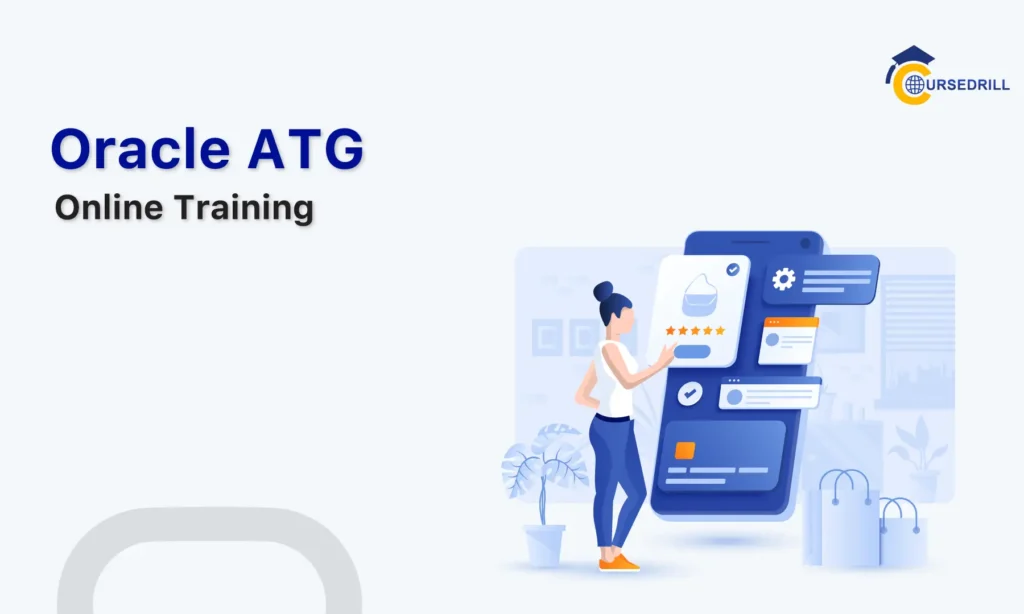- Posted on
- admin
- No Comments
Top 30 Informatica Cloud Interview Questions and Answers in 2021
Are you about to give your Informatica cloud interview? Well, then this informatica cloud interview questions blog is just designed for you! Many companies are moving from an on-premise solution to a cloud application because of its ease of development, low maintenance cost, and rapid scalability. Still, it is a challenging task for the organizations to transfer the data into the cloud. In general organizations have to move their data first into an application like salesforce, and then into the cloud. This is a time consuming process and there is an urgency to eliminate this time consuming process. Here comes the Informatica cloud that enables seamless data flow between multiple interfaces.
Informatica Cloud is a data integration platform and a solution that works as Software as a Service(SaaS). Flat files, databases, on-premise, cloud-based applications, file feeds and social networking sites can be connected by Informatica cloud.
Below are some of the frequently asked Informatica cloud interview questions and answers that are sustainable for freshers and experienced candidates. Mastering these questions will surely help you gain knowledge to perform best in the interview process. Go through them thoroughly before attending the interview. All the best.
Frequently Asked Informatica Cloud Interview Questions and Answers
1. What is one of the biggest problems that Informatica cloud is solving?
One of the biggest problems solved by the Informatica cloud is the “data integration” problem. This problem generally occurs when you try to move your data from the legacy architecture to the cloud-based architecture.
2. What is data integration?
Data integration is a general industry term used to combine the data from various business systems into one unified view. This unified view is stored in a data warehouse.
Example:
Let us take the example of CourseDrill that provides online IT training and education, where different students can opt for various courses. CourseDrill uses a lot of tools to execute its operations & some of them are:
- Google ads and Facebook ads to promote and get new customers.
- Google Analytics to track its website performance.
- Database to store all the user information.
- Email marketing to send marketing emails to nourish leads.
Each of these tools has a piece of information regarding CourseDrill operations. But to get a complete view of the business, we need to combine the data into one place. This process of combining all the data in one place is called data integration.
Want to become a high-paying Informatica Cloud professional?
Then check out our expert's designed and deliverable Informatica cloud training course. Get advice from experts.
3. List any three components of Informatica Cloud?
Three main components of Informatica cloud are:
- Informatica cloud hosting facility
- Informatica cloud application
- Informatica cloud secure agent
4. What do you know about Informatica Cloud Secure agent?
The Informatica cloud is a lightweight program that is installed & configured on top of a server. This helps in establishing connectivity between on-premises and the cloud and supports data exchange between these two. The secure agent provides a secure environment to process data locally. The Informatica cloud eliminates the manual interaction by automatically updating and restarting the secure agent software. This helps organizations in focusing on developing applications without worrying about administration.
The secure agent majorly executes the following services on the server:
- Data integration service
- Process integration services
- Executes batch commands or shell scripts in a command flow.
5. How to start a secure agent in the Informatica cloud?
We can do it in five simple steps that are mentioned below:
Open the service panel by navigating:
- To your start menu(you can find the start menu in the bottom left of your computer screen).
- Click on the control panel option.
- Open administrative tools.
- Open services menu.
- Once you open the services menu, right-click to start, stop and Restart the service.
6. List any three different types of transformations in the cloud designer?
Three different transformations in the cloud designer are:
- Expression Transformation: The row-level calculations are done by the expression transformation.
- Filter Transformation: Filter transformation can filter out the data in the flow itself.
- Joiner Transformation: As the name suggests, the joins can be created by the joiner transformation.
7. What is mapping in the Informatica cloud?
Mapping is nothing but a group of objects that are linked together by a group of transformations. These transformations contain protocols that define data flow and how the data is loaded within the targets.
8. List the basic components of Mapping?
The basic components of Mapping are:
- Mapping variables and parameters
- Source tables
- Mapping transformations
- Target objects
9. What do you know about the Runtime environment?
Run time environment is an execution platform used to run the application integration tasks and data integration tasks. Every organization must consist of at least one Run time environment so that users can run their tasks.
10. List the different mapping areas of cloud designers?
There are five different mapping areas of cloud designer they are:
- Mapping Canvas
- Transformation Palette
- Properties Panel
- Toolbar
- Status Area
11. What is the use or Replication task?
By using the Replication task, we can create the exact duplicate of data within a database table and send it to the desired target.
There are three different types of operations you can choose when you are performing the replication task they are:
- Incremental load after initial full load.
- Incremental load after initial partial load.
- Full load each run.
12. Differentiate between synchronization task and replication task?
There are three main differences between the synchronization task and the replication task.
Synchronization Task | Replication Task |
In the synchronization task, we must contain a target to integrate the data. | The replication task itself creates a target. |
It is not possible to replicate the complete schema and the tables in it at a time. | It is possible to replicate the entire schema and the tables in it. |
The user needs to manage the incremental data processing in the synchronization task. | A Replication task arrives with a built-in incremental processing mechanism. |
13. List the different Use Cases in the Informatica cloud?
There are five different use cases in the Informatica cloud they are:
- Data synchronization
- System Maintenance tasks
- Data replication
- Mappings
- Monitoring
14. What are the different tasks we can perform by using Informatica cloud REST API?
Informatica cloud REST API provides us with the ability to access the data from Informatica Intelligence Cloud Services.
We can perform the below-listed tasks by using the Informatica cloud REST API:
- Create connections
- Update connections
- Delete connections
- Start jobs
- Monitor jobs
15. List the resources provided by the Informatica Cloud REST API?
There are five different resources provided by the Informatica Cloud REST API they are:
- Activity log
- ActivityMonitor
- Connection
- Job
- Schedule
16. What do you know about metadata?
Metadata is nothing but the data about the data. In brief, assume you are sending an email to your friend the “content” you want to send is termed as data, and the information like “from, to, cc, and subject” comes under metadata.
One more simple example of metadata is considered a book; every book contains the index part and the content. Where (chapters, information, and concepts) comes under data, the index part comes under metadata.
17. Can we avoid storing metadata in the cloud repository?
No, it is impossible to avoid storing the metadata in the cloud repository. Because Informatica cloud itself stores the metadata within the cloud repository that is used to run/perform the tasks.
18. What do you know about Informatica Cloud Data Quality?
Informatica Cloud Data Quality enables our organizations to take up a comprehensive approach for managing data quality and helps us to identify the data quality problems and fix them in your business applications.
19. How does Informatica cloud data quality benefit the organizations?
Below are some points that explain how Informatica Cloud Data Quality benefits organizations:
- Speeds up the implementation and costs of cloud initiatives are reduced.
- Using data quality, companies can easily adopt the new data quality patterns and give the tough competition in the market.
- Organizations can get the correct insights from SaaS applications and data lakes.
20. When is the latest version of Informatica Intelligent Cloud Services released?
The latest version of Informatica Intelligent Cloud Services was released on February 12th, 2021.
21. What are the new enhancements of Source Control in the latest version of IICS?
Source Control has the following enhancements:
- Support for on-premise repositories
- Branch selection
22. What is the component used to upload an XML file that defines the hierarchy of the output data?
Hierarchical schema is a component that is used to upload a JSON or an XML file that defines the output data’s hierarchy.
23. Explain the task in Informatica cloud?
The task is nothing but a process that we build to analyze, retrieve, transform and load the data. We can manually run the tasks or schedule a set of tasks to run at a specific time.
24. What is indirect file loading?
Indirect file loading is a process where various source files have identical properties and structure sequentially in mapping. Choose File List under source type property about a source transformation to perform indirect file loading.
25. Tell me any three different methods to implement indirect file loading in the Informatica cloud?
The three methods to implement indirect file loading in the Informatica cloud are:
- We can use the command as the source type within the source transformation.
- We can use the file list as the source type within the source transformation.
- We can use the data integration Quickstart bundle.
26. What is the key range partitioning?
Key range partitioning assigns the data into the various partitions based on the partition key we have selected, and the values range defined. We have to choose the field as a partitioning key, and only then we have to define the start and end ranges of that value.
27. To what kind of sources can we enable fixed partitioning?
Fixed partitioning can be enabled to the sources that do not support the key range partitioning; we have to pass a value to select the number of partitions.
28. What are the default values of $Lastruntime and $LastRunDate?
The default value of $Lastruntime is 1970-01-01 00:00:00.
The default value of $LastRunDate is 1970-01-01.
29. Do the values of $Lastruntime and $LastRunDate get updated when the task’s execution fails?
No, $Lastruntime and $LastRunDate values do not get updated if there is a task execution failure status.
30. How can we generate the unique sequence of numbers for every downstream transformation?
If the incoming fields of a sequence generator are disabled, then the sequence generator will generate the unique sequence of numbers for every downstream transformation.
Final Thoughts:
Above mentioned Informatica cloud interview questions would help you answer the questions asked in any typical informatica cloud interview. Hope this blog has helped you in gaining some useful information. Happy learning!
Author Bio

Yamuna Karumuri is a content writer at CourseDrill. Her passion lies in writing articles on the IT platforms including Machine learning, Workday, Sailpoint, Data Science, Artificial Intelligence, Selenium, MSBI, and so on. You can connect with her via LinkedIn.
Popular Courses



